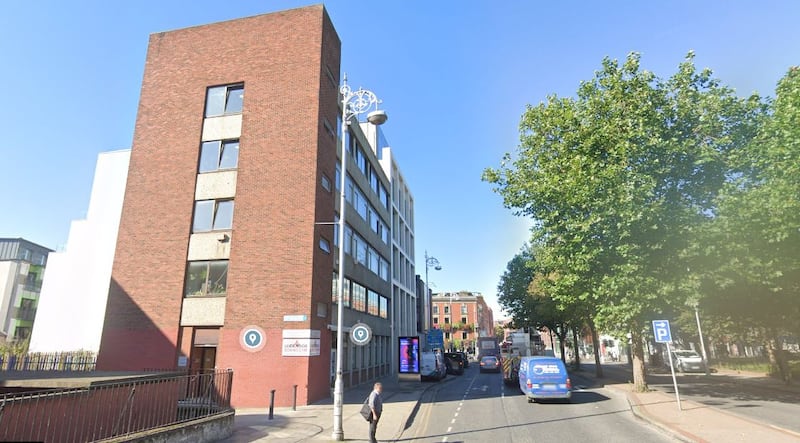One of the least debated and perhaps most important issues confronting Ireland in the 21st century is that of planning our built environment. For the last century and a half, our urban areas and in particular our built-up city areas have been allowed to develop in a haphazard, often ugly and unplanned way.
When you consider the parts of Dublin city for instance, which are most pleasing to the modern eye, most of them came about not from a process of architectural accidents, but from a very clear vision of how those areas should be developed and how they should look as a whole following their development.
The whole idea of planning urban regeneration effectively disappeared in the first half of the 20th century
So, areas of Georgian Dublin such as Gardiner Street, Mountjoy Square, Merrion Square, Parnell Square, Fitzwilliam Square, Capel Street, Parliament Street, Dame Street, Westmoreland Street and O’Connell Street were not simply random patchworks of individual plot developments but, rather, carefully controlled streetscapes and building types decided on by the great developers, including the Wide Street Commissioners, the Gardiner Estate and the Pembroke Estate.
Creating streetscapes
These bodies did not themselves build or rebuild the streetscapes which they oversaw. They acquired land, or used their own land, to grant highly controlled building leases to developers with a view to creating streetscapes, urban environments, open spaces and public buildings which would cohere as pleasant and even beautiful architecture.

Planning streetscapes all but ended in the 1930s with the rebuilding of O’Connell Street and its environs after the War of Independence and the Civil War. Suburban housing projects such as that in Marino gave way to a degraded form of large-scale urban planning of major social housing projects on the outskirts of the city.
Social apartment building disappeared by the 1970s. And many city council apartment blocks were thrown up in accordance with pre-planned models here and there on publicly acquired handkerchief sites. The result, in many cases, but not all, was a proliferation of mini-ghettos of social deprivation.
The whole idea of planning urban regeneration effectively disappeared in the first half of the 20th century. Dublin Corporation and latterly the city council seems to have confined its vision to a process of passive planning controls rather than positive urban regeneration. One of the most extraordinary failures of our system of local government has been the complete abdication by our planners from the massive powers given them to reshape our cities by positive intervention.
While the Housing Act of 1966 allowed the compulsory acquisition of land for housing, the Planning and Development Acts have empowered local authorities in urban areas to acquire land with a view to its redevelopment. The breadth of these powers is truly enormous. A local authority is entitled to look at areas which are underdeveloped and to acquire those areas with a view to securing their redevelopment in accordance with the local authority’s development plan.
It isn’t simply a matter of zoning areas for particular types of development and waiting or hoping for private developers to acquire tracts of zoned lands with a view to patterns of development largely chosen by such speculative developers.
No great or beautiful city ever emerged from fragmented and incoherent market forces let loose on its ground plan
Dublin City Council has the identical rights that the 18th century Wide Street Commissioners had to reconfigure and redesign the capital city. The council could, if it wished to do so, compulsory purchase areas of underdeveloped urban Dublin, redesign the streetscapes and procure redevelopment of those areas in accordance with a coherent vision of such areas by private developer-lessees.
We have the statutory powers and we have constitutional authority to do for Dublin city in the 21st century what Baron Hausmann did for Paris in the 19th century or what the Wide Street Commissioners did for centre city Dublin in the 18th century.
Negative prohibitions
Urban planning, however, has now degenerated into negative prohibitions and controls rather than positive redesign. Look at Cuffe Street and Kevin Street which were widened and cleared of Georgian slums in the 1960s. It is now a mixed jumble of random office blocks which bear little or no relation to each other, form no coherent streetscape and utterly lack any sense of overall vision or design. There are many similar examples of appalling area non-design scattered across Dublin’s inner city.
The city council seems to see its primary role these days as manager of open spaces, roadways and streets. While I share many of their preferences for pedestrianisation and cycle lanes, these alone will not make Dublin a beautiful city. Awful mistakes have been made such as Smithfield and Newmarket.

We need an entirely different approach to urban development in Dublin. Conserving our built heritage is a good thing. This is not a matter of being right-wing or left-wing. No great or beautiful city ever emerged from fragmented and incoherent market forces let loose on its ground plan.
We desperately need to bring people back into our city centres. We need huge redevelopment on a planned and aesthetically pleasing basis to create a new built environment, streetscapes and open areas conducive to a high quality of city centre life.











